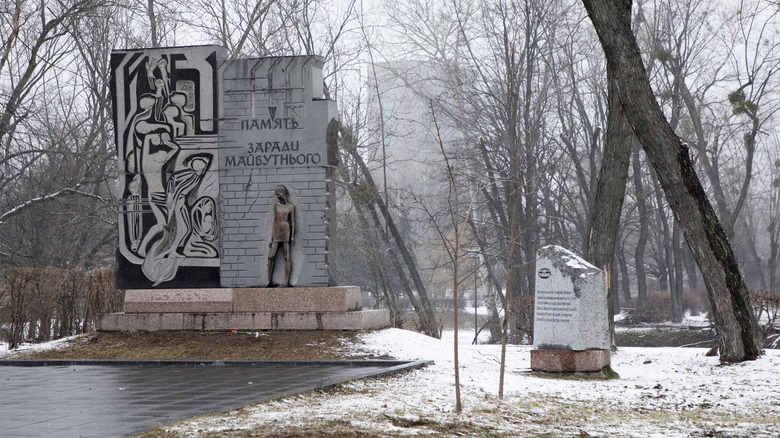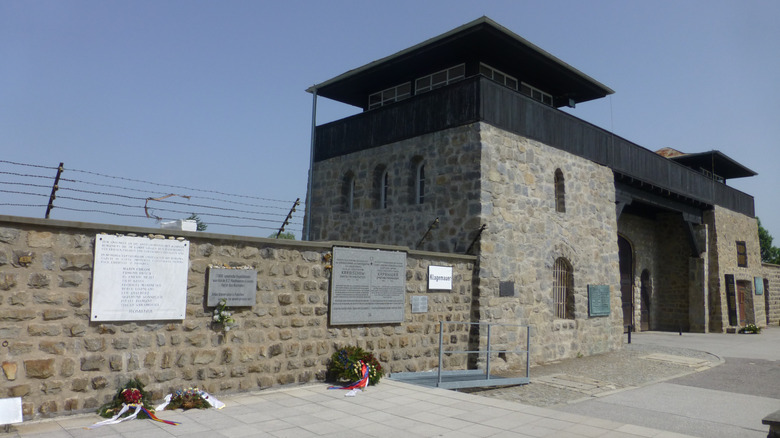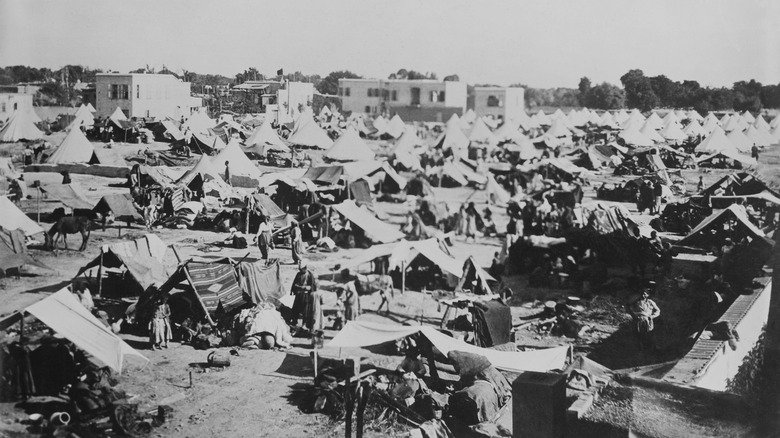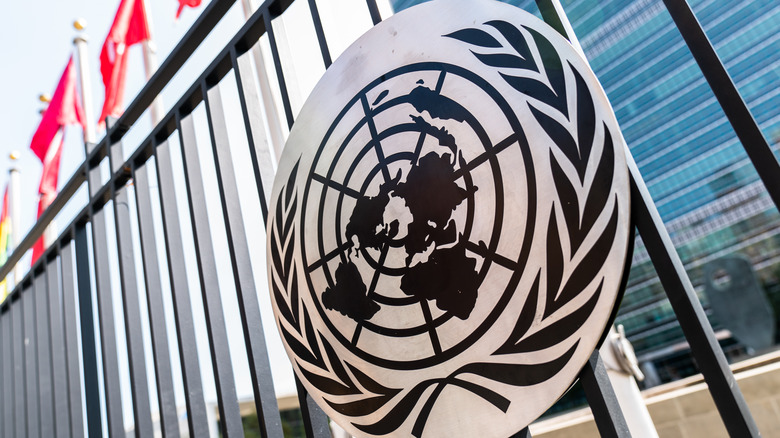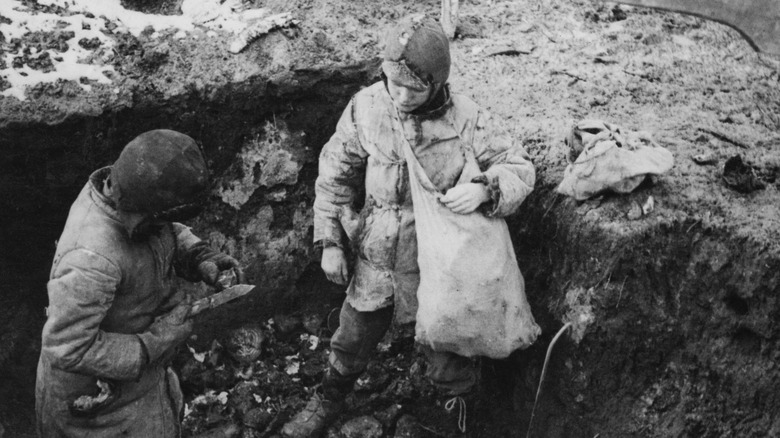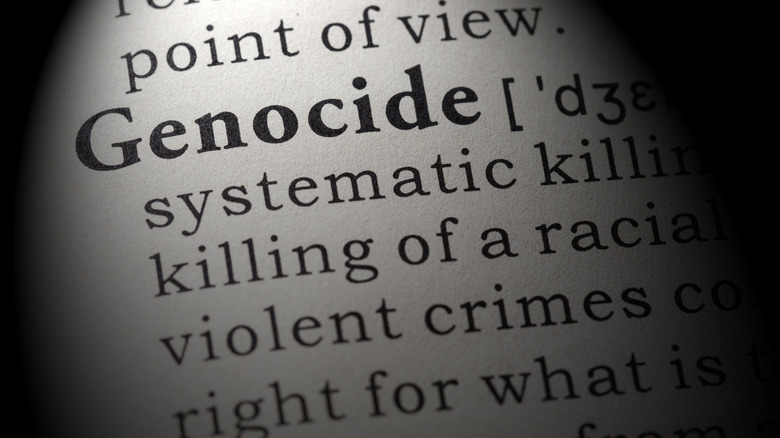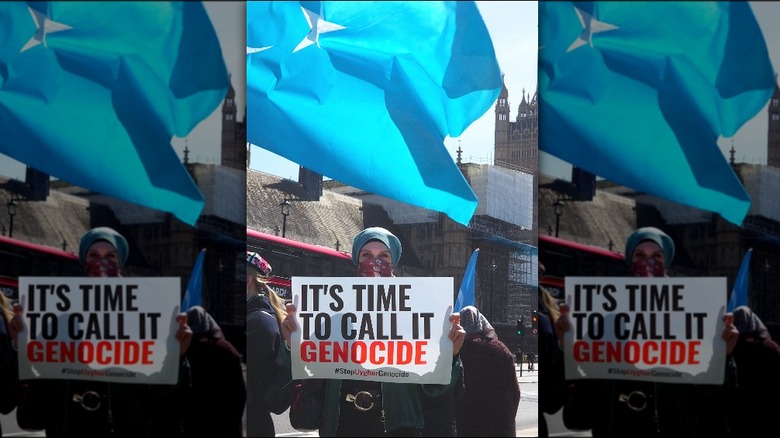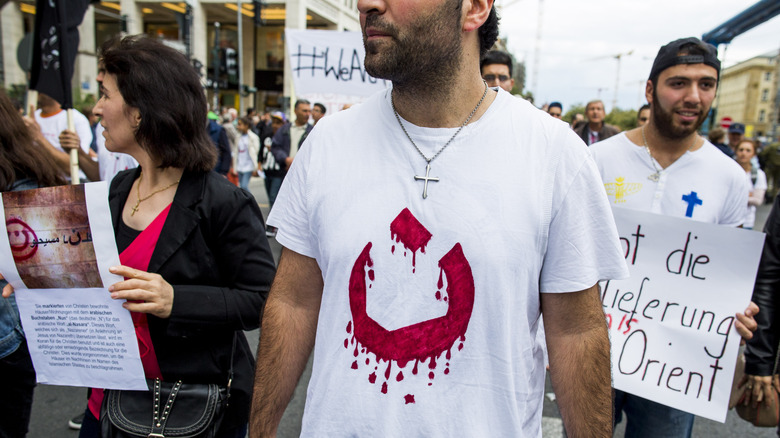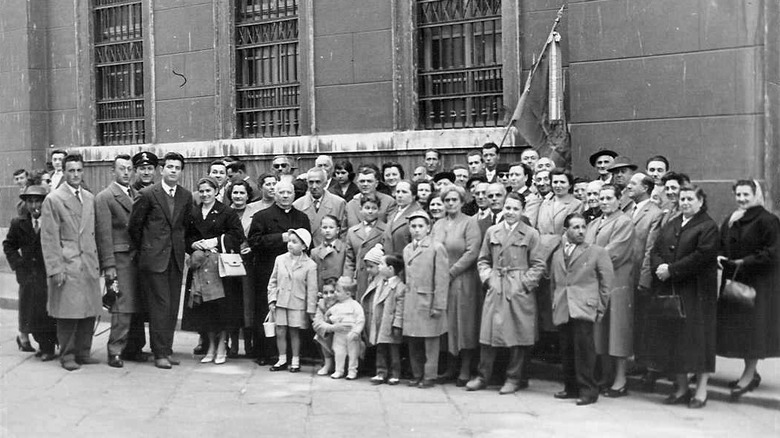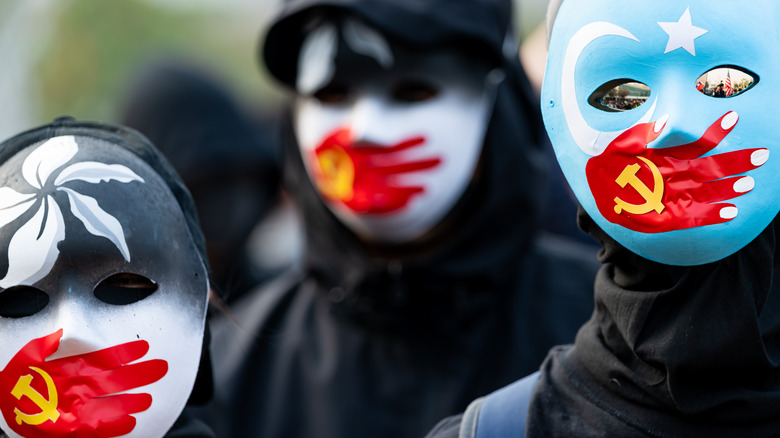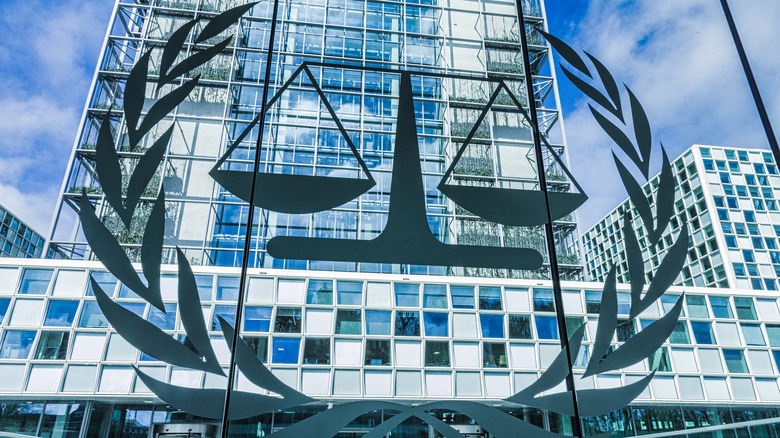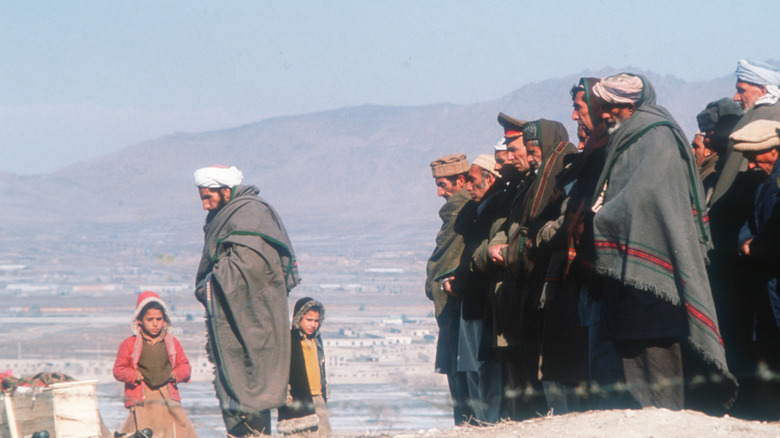How Is Genocide Defined?
In the 1920s, according to the journal Genocide Studies and Prevention, a young Polish student named Raphael Lemkin discovered an article on an Armenian genocide survivor named Soghomon Tehlirian in Lviv. Out of this encounter came a new term and branch of international law –- that of genocide. According to the Online Etymological Dictionary, the term "genocide" is a hybrid term coined from the Greek "genos" (race or kind) an Latin "occidere" (to kill). So it literally means the "killing of a race/kind." But the definition of genocide is hardly agreed upon. There have been debates regarding scale, intent, which groups are protected under the definition, and which crimes are to be counted under it.
Further complicating matters is the popular perception of genocide, which views it through the lens of wartime mass killings such as the Shoah during World War II. But the actual definition is much broader.
Raphael Lemkin's conception of genocide
When Polish political scientist Raphael Lemkin coined the term "genocide," he had a much broader idea of what the term should mean. According to the journal Genocide Studies and Prevention, Lemkin had proposed the crimes of "barbarity" and "vandalism" against national groups and their institutions. But when the full extent of Nazi Germany's crimes surfaced, this crime needed a name. So Lemkin settled on the idea of genocide as actions that aim at the deliberate destruction of groups. Lemkin's definition was formulated in the environment of Nazi-Soviet mass murder, and he very intelligently rejected genocide as mass killing. Instead, he saw it as a more total destruction that mass killings could not capture.
Thus, Lemkin defined his version of genocide -– the original definition –- as the destruction of people as an entity rather than simply of people. The crimes, while naturally aimed against individuals, are meant to destroy not the individual but the individual as part of a larger group. So the Jew was not killed because he was who he was as a person but because he was a member of the Jewish people. Most importantly, however, Lemkin also added that genocide involved the "destruction of essential foundations of [group] life." In practical terms this means national institutions, churches, culture, and many other facets that are harder to tangibly define. But because Lemkin's definition was broad, it was never defined as he would have wished. But he did manage to convince the United Nations to take the first steps to prevent genocide through a working definition -– even if it was not perfect.
Genocide before genocide
Genocide was only coined in 1944, but the acts that constitute genocide have been going on for as long as humans have existed. So what of those crimes? The Ottoman crimes against Assyrians and Armenians seemed to fit under this label as well. Yet, according to Genocide Studies and Prevention, when Raphael Lemkin read about Armenian survivor Soghomon Tehlirian in 1921, his professor told him that what the Ottomans had done to their Armenian population was not a crime –- at least under international law.
Tehlirian had assassinated Mehmet Talaat, one of the members of the Young Turks Triumvrate (via Sciences Po) that de facto governed the Ottoman Empire during World War I and had carried out the 1915 mass killings and deportations of Armenian and Assyrian Christians. According to the Armenian Weekly, Talaat never faced justice for his crimes. His conviction and death sentence occurred in absentia and was never enforced. Tehlirian had killed him in revenge. But why was justice fleeting? Lemkin's professor claimed that genocide, as it would later be called, was a nation's sovereign right. People were a nation's sovereign property in the same way chickens belong to a farmer. If a farmer mass-culls his chickens, it's his business. The same applied to a nation exterminating people within its own borders. Lemkin wanted to correct this gap in international law and called upon the U.N. to codify a definition by 1946, after the revelations of Nazi-Soviet terror.
The U.N. definition of 1946
Raphael Lemkin got his wish in 1946, when he lobbied the newly founded United Nations to adopt a definition of the new crime of genocide. On December 11, 1946, the U.N. General Assembly voted to a adopt a short resolution called RES 96(1): The Crime of Genocide. The resolution gave the world the first official definition of genocide, the crime having occurred "when racial, religious, political and other groups have been destroyed, entirely or in part." Obviously, this definition was still a little blurry, as it did not define what kinds of offenses pursuant to the final goal would be included. So the General Assembly called upon the U.N. to establish a framework for defining genocide more concretely in a document that would later become the U.N. Genocide Convention.
One would expect that following the prosecution of Nazi war criminals at Nuremberg that this resolution should have been mostly unopposed. The only problem was that Germany's biggest collaborator and enemy –-the Soviet Union -– was a permanent voting member of the U.N. Security Council and global superpower. The USSR's Joseph Stalin had committed the exact same crimes as Germany on an even bigger scale, leading to opposition to the broad definition of genocide.
The Soviet Lobby
Soviet crimes from the 1930's onward were generally overlooked. The New York Times, per Tablet Magazine, had helped cover up the artificial Holodomor famine aimed at breaking Ukrainian nationalism in the early '30s, while President Franklin Roosevelt turned a blind eye to Soviet crimes at Yalta and handed over all of Eastern Europe to Soviet terror in what Poland and its neighbors considered a betrayal of the worst kind, per Polish outlet TVP. So it is little surprise that when the USSR opposed the definition of genocide on political expediency, the world caved.
The USSR committed virtually every crime enumerated in the 1946 definition of genocide. Its crimes against Ukrainians, Muslim Caucasians, Balts, political dissidents, the Ukrainian Greek Catholic Church and other Christians, and many more all amounted to attempts to stamp out those entities. It was feared that the definition of genocide, particularly political persecution for which the USSR was best known in the West, would draw too much attention to Soviet terror, argues author Anton Weiss-Wendt. So according to Rudolf Rummel's "Lethal Politics," the Soviet U.N. delegation fought to have the destruction of political dissidents stricken from the definition. For whatever reason — perhaps because Soviet crimes against ethno-religious groups before, during, and after the war had been swept under the rug — the rest of the definition stood. In the final Genocide Convention entered into force in 1951, persecution of political dissidents was replaced with persecution on religious and national bases.
The crimes of genocide
The U.N. 1946 definition of genocide was vague. While it condemned the destruction of groups, it did not define what crimes were pursuant to such goals, and the General Assembly members realized this. So Article II of the U.N. Genocide Convention was written to close the loopholes. First and foremost, in order for any crime to constitute genocide (as opposed to a crime against humanity), it must be intentional.
The broad crimes of genocide include murder but also psychological and bodily harm calculated to humiliate, isolate, and destroy. While this is ambiguous, Raphael Lemkin had a concrete idea of this crime. Lemkin, per the Holomodor Research and Education Consortium (HREC), in his analysis of the Soviet Holodomor, included the destruction of cultural and religious institutions, such as the suppression of the Ukrainian Orthodox Greek Catholic churches. Another crime is deprivation to destroy the whole group or parts of it. Nazi imprisonment of Jews in concentration camps or deliberate Soviet starvation of Ukrainians are two examples.
One of the most debated crimes is the forcible transfer of a group's children to another group with the intent of eradicating their identities. But Lemkin also included replacement migration -– the deliberate importation of foreigners to an area with the goal of swamping the native population –- under this form of genocide. This last one has ramifications in debates over modern mass migration and past colonialism that rage today.
The tragedy of the numbers game
Political polemicists love to debate victimhood based on genocide death counts. But the definition of genocide in the U.N. Genocide Convention shows that numbers have no bearing on the crime's severity.
As mentioned in the convention, genocide is all about intent, not scale, an interpretation that, per the New Yorker, holds true today. Using concrete examples, it becomes clear why. The worst genocides by death toll are the Holodomor, which per the HREC, killed between 6-10 million, and the Holocaust, which per the United States Holocaust Memorial Museum, has been hard to specify. But upwards of 6 million Jews were killed, with other non-Jewish groups also in the millions. The Holocaust in particular, per the International Holocaust Remembrance Alliance, set the paradigm for prosecuting the crime. Thus, when people think of genocide, the Holocaust -– and large death counts –- come to mind.
But if genocide is purely a numbers game, most recent ones are no genocides at all. But this is not the case, as groups can number in a few hundreds or in the many millions. Thus, a death count of 1 million victims in the Rwandan Genocide (via the journal Population) is still genocide because the intent to exterminate existed. In contrast are the victims in Bosnia. Despite a comparatively lower death toll of 100,000, per the Montreal Holocaust Museum, the intent was the same. Thus these tragedies are all genocides under the law — regardless of death count.
'Soft' genocides
Popular views place genocide in the context of violent suppression. However, modern governments have devised new methods for "soft" genocide. While the U.N. Genocide Convention does not address this, Raphael Lemkin read "soft" tactics into the convention. Per the HREC, he mentioned replacement migration and the destruction of institutions. These are not necessarily acts of wartime violence and pass under the radar in the context of genocide until it is too late.
The "soft" genocide that has captured the headlines today is the Chinese treatment of its Muslim Uyghur population in Xinjiang Province. According to Human Events, the Chinese government has used re-education camps, demoralizing propaganda, and forced marriages between Han Chinese men and Uyghur women to break this ethnic group's existence. According to VOA, the Chinese government actively promotes these unions through state propaganda while interning refuseniks' families.
Forced marriage likely runs afoul of the revised Article II of the genocide convention as an action "intended to prevent births within a group." But since there is no overt violence, the Chinese government has plausible deniability of wrongdoing. But China's actions fit the overall definition of genocide –- a calculated and intentional attempt to eradicate another group -– violently or otherwise. And Article II has enough leeway to suggest that the destruction of culture, encouraged or even forcible intermarriage, and internment all qualify, particularly under Lemkin's view. Otherwise, they certainly fall under incitement to genocide –- another oft-missed crime.
Incitement to genocide
Genocide occurs in 10 stages. Actual killings do not begin until stage eight, meaning that genocide unravels over a long period of time, much of which is incitement. Unfortunately, incitement tends to go unnoticed because it is gradual, but looking back it is easy to see how it works using the example of ISIS' genocide against Shias, Yazidis, and Christians in Iraq and Syria.
ISIS did not immediately persecute Christians and Yazidis. It engaged in a propaganda campaign to incite violence first. According to Polish academic Piotr Lubinski, ISIS incited genocide against Yazidis by inviting jihadists to come fight against Yazidi "satanists and devil worshippers" on social media. According to CBS, ISIS marked Christian homes with the Arabic letter "nun" (pictured above) for Nazarene, a virtual death sentence for the inhabitants that refused to flee. To survive, Christians had to pay jizya protection money. In both cases, ISIS had engaged in classification of both groups as "others," symbolization with the letter "nun," discrimination (payment of protection money), and dehumanization by labeling both groups as infidels or devil-worshippers
According to the United Nations, incitement to genocide is an inchoate (preliminary) crime that can be prosecuted even if no genocide takes place. Thus, non-partisan international watchdog Genocide Watch keeps a running list of other hotspots that may turn into genocide, since the warning signs are easy to miss until it is too late.
The relationship to ethnic cleansing
Debates over genocide often run into legal difficulties because of conflation with ethnic cleansing. On paper, they are two separate crimes. While genocide is an attempt to destroy a group, ethnic cleansing, per PBS, only involves the expulsion of a group from its territory and is not considered a crime under U.N. law. But as the network notes, the lines are often blurred, because ethnic cleansing yields the same results as genocide.
Consider the following example from 1923. According to Al Jazeera, Turkey and Greece agreed upon a population exchange (aka mass expulsion). Turkey traded its Greek-speaking Christian population in exchange for Greece's Muslim population. This does not technically fit the definition of genocide because there was no coordinated extermination. But although the Pontic Greek refugees survived as individuals, the BBC notes that exile from their Anatolian homeland put their unique traditions, history, language and very existence as a unique group in peril. The same can be said of Istro-Dalmatian Italians. According to historian Marino Manin, Yugoslav authorities killed or expelled over 350,000 Italians from their native lands. The Journal of Contemporary History argues that Yugoslavia intended at most to expel Italians, not exterminate them. Regardless of Yugoslav intentions, once the refugees are dispersed, ethnic cohesion is difficult to maintain. Thus the group disappears.
Since the destruction of a people and its culture fits the definition of genocide in everything but intent, it is easy to see why lines are blurred –- and begs the question if the two crimes should be separate in the first place.
Criticism
As has been shown, defining genocide is a contentious issue with political and economic ramifications. The definition, per the U.N., has also been criticized as being too narrow and difficult to apply on the ground. As mentioned earlier, it does not cover ethnic cleansing. It also has been criticized, as noted in the journal Alternatives, for lacking an enforcement mechanism, particularly when governments wage peacetime or "soft" genocides that do not fit neatly with the definitions outlined in the convention but still yield the same results. Unfortunately, this legal ambiguity has allowed political and economic interests to trump humanitarian ones and create an ideal climate for genocide denial.
The Uyghur genocide in China is the most salient modern example of this problem. As Human Events noted, the Chinese actions in Xinjiang do not neatly fit the Genocide Convention, which was drafted in the context of wartime mass murders. So the Economist, for instance, has argued that since China is not slaughtering Uyghurs, it is not genocide, even if the result -– the disappearance of the Uyghurs as a distinct group -– is the same. But unsurprisingly, ulterior motives are at play. The Australian Strategic Policy Institute found that major multinationals such as Nike, Lenovo, and Microsoft all use forced Uyghur labor to reduce their operating costs. Thus they avoid criticism of China lest the Chines Communist Party forbid them from operating on Chinese soil.
The difficulty of prosecuting genocide
According to RFI, the Chinese actions in Xinjiang shows that genocide is difficult to prosecute. The U.N. Genocide Convention states that prosecution of genocide is the responsibility of the countries where the crime was committed or international tribunals upon whose legitimacy all parties have agreed on. But if a country is unwilling to prosecute or extradite the guilty, prosecution is impossible. Although the U.N. has a definition of genocide, individual states and tribunals can use their own metrics, often leading to selective prosecution. Finally, since genocide requires proof of intent, there is always wiggle room to downgrade the offense to crimes against humanity or ethnic cleansing, both of which carry lesser sentences. For influential countries such as China, there are few ramifications for non-cooperation. Thus, genocide is usually prosecuted post ipso facto in smaller countries. And even then it is difficult.
The difficulties of prosecuting genocide are made apparent even in successful prosecutions, such as those in the Rwandan Genocide. According to the Fordham Law Journal, prosecution is usually limited to high-level actors like generals and politicians. The unresolved legal question of whether criminalizing a state criminalizes its population makes it difficult to try ordinary people. Thus, the people that carried out the Rwandan Taba Massacres were not tried. Instead the town mayor Jean-Paul Akayesu was convicted of failing to prevent them and sentenced to prison. But as The Hague notes, there was an extradition battle first, which The Guardian has shown to be an unfortunate feature of genocide prosecution that has allowed many war criminals to escape justice decades later.
The political problem
So far, it has been shown that the definition of genocide has many ambiguities and issues, particularly in the realm of enforcement. Critics have added an additional grievance -– namely the absence of political persecution from the definition. U.N. Resolution 96(1) originally included political persecution, but it was cut. Now, voices have called for it to be re-added to the definition in light of horrific massacres of political opponents around the world.
Proponents have used Afghanistan as a case study. M. Hassan Kakar's "The Soviet Invasion and the Afghan Response, 1979-1982" argues that the Soviet atrocities in Afghanistan deserve to be counted as genocide. Now, under the U.N. definition, such crimes do not qualify, since they were not aimed at destroying a particular Afghan ethnic group or the Afghan nationality. They were aimed at suppressing all resistance to Soviet and Afghan communist rule. But Kakar uses a different definition given in the book "The History and Sociology of Genocide," which defines the crime as one-sided mass killings intended to destroy a group as defined by the oppressor.
This definition is more in line with popular conceptions of genocide and would classify any mass killing -– political or otherwise -– as such. But it also poses a problem. If genocide is mass killing, then what about the soft genocides that do not use violence? Regardless, although steps have been taken to prevent this heinous crime from occurring, international law must keep up with new methods –- particularly non-violent ones -– for committing genocide if the U.N. Genocide Convention is to be taken seriously.
